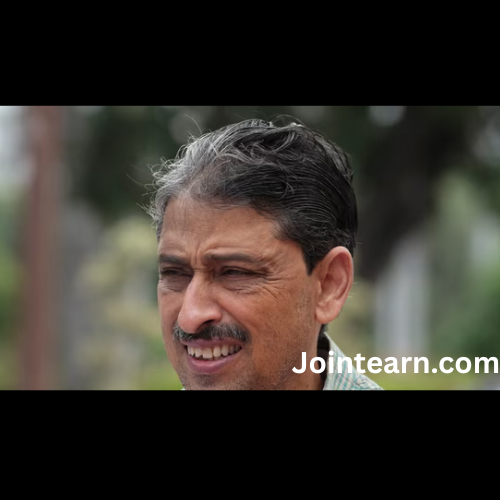
Tensions flared in Punjab on Sunday as members of the Punjabi Mahasangh staged a protest against Congress MP Imran Masood, accusing him of drawing an inappropriate comparison between the Indian revolutionary Bhagat Singh and the Palestinian organization Hamas. The protest took place at Bhagat Singh Chowk, with demonstrators wearing black bands on their arms and raising slogans demanding an apology from the MP, underscoring the sensitivity surrounding India’s freedom struggle and the legacy of its icons.
The protest, led by Yogesh Dua, president of Punjabi Mahasangh, called for Masood to publicly apologize by offering flowers at a statue of Bhagat Singh, a symbolic gesture reflecting respect for the freedom fighter. According to Dua, Masood’s alleged remarks on television on Friday were highly inflammatory. “Hamas is an organisation that has killed innocent people and claims to be fighting for freedom. Bhagat Singh never killed anyone, and even if he threw a bomb, he did so symbolically to send a message to the British. Bhagat Singh never killed anyone. Hamas is a terrorist organisation,” he said, highlighting the stark differences between Bhagat Singh’s revolutionary actions and the violence perpetrated by Hamas.
Allegations of Political Motivation
The controversy quickly took on a political dimension as BJP leaders accused Masood of making the comparison as part of a calculated electoral strategy. Amit Malviya, head of the BJP’s IT cell, suggested that the MP’s remarks were timed ahead of the upcoming Bihar Assembly elections, slated for November 6 and 11. In a post on X, Malviya stated, “Comparing Bhagat Singh to the terrorist organisation Hamas by Congress MP Imran Masood during the Bihar elections is part of a well-planned strategy. This is an insult to the people of Bihar. Bhagat Singh had a deep connection with Bihar.”
Malviya’s comments emphasized the enduring reverence for Bhagat Singh across India, particularly in Bihar, where his revolutionary activities historically inspired local freedom movements. The BJP’s response framed the alleged remarks as an attempt to manipulate public sentiment during a crucial electoral period, further intensifying the debate over political responsibility and historical legacy.
Masood’s Response and Clarification
In the wake of mounting protests and political criticism, Masood issued a statement asserting that he had never intended to draw a direct comparison between Bhagat Singh and Hamas. Speaking to PTI, he clarified, “Bhagat Singh cannot be compared with Hamas; no one can be, as the two are not the same. Bhagat Singh can never be compared to anyone. No one is comparable. This is wrong. I have clearly said that if a person kills another person, it is not a good thing. We do not support violence.”
Masood further accused the BJP of selectively misrepresenting his comments to stoke controversy. “The BJP people are selectively spreading this falsehood. I only said that Hamas is fighting for their land, just as Bhagat Singh fought for ours,” he added, emphasizing that his intention was to discuss struggles for land and sovereignty, rather than equate the moral or historical legitimacy of the two.
The Legacy of Bhagat Singh
The intensity of the backlash reflects the enduring stature of Bhagat Singh in Indian public memory. Revered as Shaheed-E-Azam, Bhagat Singh’s revolutionary activities during the freedom struggle are remembered for their symbolic nature and commitment to India’s independence. Unlike terrorist organizations that deliberately target civilians, Bhagat Singh’s acts, including his famous bomb-throwing incident in the Central Legislative Assembly, were intended to protest colonial policies and raise awareness without taking innocent lives.
His legacy is particularly sensitive in regions such as Punjab and Bihar, where his revolutionary ideals and martyrdom are celebrated annually. Any perceived mischaracterization of Bhagat Singh’s actions, therefore, is likely to elicit strong reactions from both the public and political organizations.
Protesters Demand Accountability
During Sunday’s protest, demonstrators at Bhagat Singh Chowk called for Masood to make amends by personally visiting the site and offering flowers at Bhagat Singh’s statue. Wearing black bands on their arms, the protesters raised slogans denouncing what they termed “misrepresentation” of India’s freedom heroes. The demonstration underscored the expectation among many citizens that political figures maintain historical accuracy and respect the symbolic significance of national icons.
The protest also highlighted broader concerns about political rhetoric and the manipulation of sensitive historical narratives for electoral purposes. Observers note that public figures have a responsibility to communicate carefully, particularly when referencing figures whose legacy carries deep emotional and cultural weight.
Political Fallout and Public Debate
The controversy surrounding Masood’s remarks comes at a politically sensitive time, just weeks before the Bihar Assembly elections. Both parties and citizens have been quick to weigh in on social media and news platforms, reflecting the heightened scrutiny on political communication during election season. While supporters of Masood argue that his statements were taken out of context, critics have framed the issue as a deliberate attempt to exploit public sentiment, inflaming regional pride and historical memory for political gain.
This incident has sparked broader conversations about the role of politicians in referencing historical figures. Bhagat Singh’s life and work have become emblematic of courage, non-violent protest, and national pride. Misrepresenting or oversimplifying these contributions can lead to misunderstandings, public outrage, and political polarization, as demonstrated by the immediate reactions to Masood’s interview.
Lessons in Communication and Historical Sensitivity
The episode highlights the delicate balance public figures must maintain when referencing historical or revolutionary figures in political discourse. As Masood himself later clarified, the intent may have been to draw a parallel between struggles for land and sovereignty, yet the manner of expression created widespread misunderstanding.
Historians and commentators suggest that political leaders should provide context when drawing comparisons, particularly with figures whose legacy is universally revered. The Bhagat Singh-Hamas controversy demonstrates how sensitive historical analogies can quickly escalate into public protests and political debate, emphasizing the need for careful messaging and responsible communication.
Conclusion: A Controversy That Reflects Political Sensitivities
The protest against Congress MP Imran Masood at Bhagat Singh Chowk underscores the enduring emotional resonance of India’s freedom fighters and the high expectations placed on political leaders to speak responsibly. While Masood has clarified his statements, the incident illustrates how historical references can be politicized, misinterpreted, or leveraged during election periods, sparking public debate and social mobilization.
At its core, the controversy highlights the enduring respect for Bhagat Singh as a symbol of India’s fight for independence, a figure whose actions and sacrifices continue to inspire generations. Public responses—from protests to political statements—reflect the collective insistence that national icons be represented accurately and respectfully. As India moves closer to the Bihar Assembly elections, the episode serves as a reminder of the intersection between politics, historical memory, and public sentiment, and how missteps in communication can quickly become focal points for civic action and political discourse.

Leave a Reply